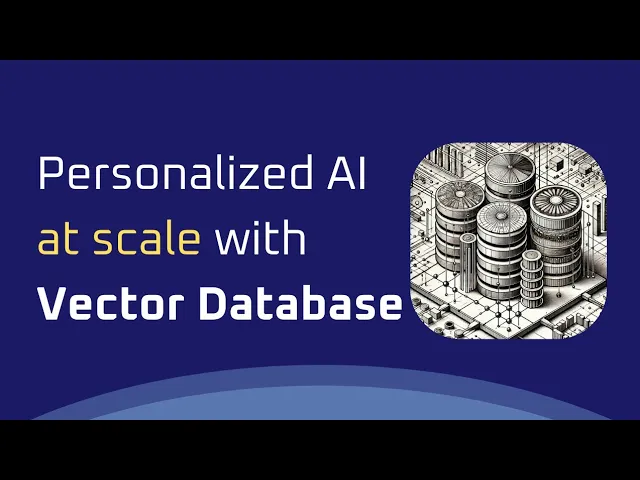Vector Databases The Foundation of Document-Enhanced AI Systems
When building AI systems that need to work with your organization’s documents, reports, or knowledge bases, the way you store and retrieve that information makes all the difference between a basic chatbot and a truly intelligent assistant. Vector databases have emerged as the crucial infrastructure component that enables AI systems to efficiently work with large document collections.
The Conceptual Magic of Embeddings
At the heart of document-enhanced AI systems lies a fascinating concept: representing text as numbers. These numerical representations, called embeddings, transform words and concepts into mathematical objects that AI can process.
Think of embeddings as translating human language into a language that machines can understand - a multidimensional space where similar concepts cluster together. When your documents are converted into these numerical representations, a vector database can efficiently organize and retrieve them based on their meaning rather than just keywords.
This transformation allows AI systems to:
- Understand the semantic meaning behind your documents
- Recognize conceptual similarities even when different terminology is used
- Handle nuanced queries that traditional search systems would struggle with
- Connect information across different documents and formats
For comprehensive guidance on implementing these concepts, see my complete RAG systems tutorial.
Similarity Search: Beyond Simple Pattern Matching
Traditional search systems typically look for exact keyword matches or predefined patterns. Vector databases, however, enable similarity search - a fundamentally different approach that finds documents based on their conceptual closeness to a query.
When a user asks a question, the vector database:
- Converts the question into the same numerical format as your stored documents
- Performs mathematical operations to find which document embeddings are closest
- Retrieves the most relevant documents based on conceptual similarity
- Provides these documents as context for the AI to formulate a response
This approach means your AI system can find information even when users phrase their questions differently than how the information is written in your documents.
The Scalability Advantage
For small applications with limited documents, keeping everything in memory might work initially. But as your document collection grows, vector databases offer crucial advantages:
- Handling massive document collections without performance degradation
- Efficiently indexing and retrieving information at scale
- Maintaining responsiveness even as user queries increase
- Enabling continuous updates to your knowledge base without system rebuilds
This scalability transforms what’s possible with document-enhanced AI, allowing systems to work with entire corporate knowledge bases, product documentation libraries, or research repositories. Understanding how to architect these scalable systems is a core skill covered in my production-ready RAG systems guide.
Strategic Considerations for Vector Database Selection
When evaluating vector database solutions, several conceptual factors deserve attention:
Hybrid Functionality: Some solutions offer both traditional document storage and vector search capabilities in a single system, simplifying your architecture.
Integration Capabilities: How easily the database connects with your existing systems and AI models matters significantly for implementation success.
Optimization Features: Different vector databases use various approaches to optimize search speed and accuracy, with some offering specialized indexes for specific use cases.
Managed vs. Self-Hosted: Consider whether your organization has the expertise to maintain a self-hosted solution or would benefit from a managed service.
Moving From Concept to Reality
The power of vector databases lies in their ability to bridge the gap between raw document collections and intelligent AI responses. By providing the infrastructure to efficiently store, index, and retrieve document embeddings, these specialized databases enable AI systems to access relevant information at precisely the right moment.
As organizations increasingly seek to enhance their AI systems with domain-specific knowledge, understanding the fundamental role of vector databases becomes essential for anyone working at the intersection of AI and information management. To build comprehensive expertise in these technologies, follow my AI engineering career roadmap.
To see exactly how to implement these concepts in practice, watch the full video tutorial on YouTube. I walk through each step in detail and show you the technical aspects not covered in this post. If you’re interested in learning more about AI engineering, join the AI Engineering community where we share insights, resources, and support for your journey. Turn AI from a threat into your biggest career advantage!

